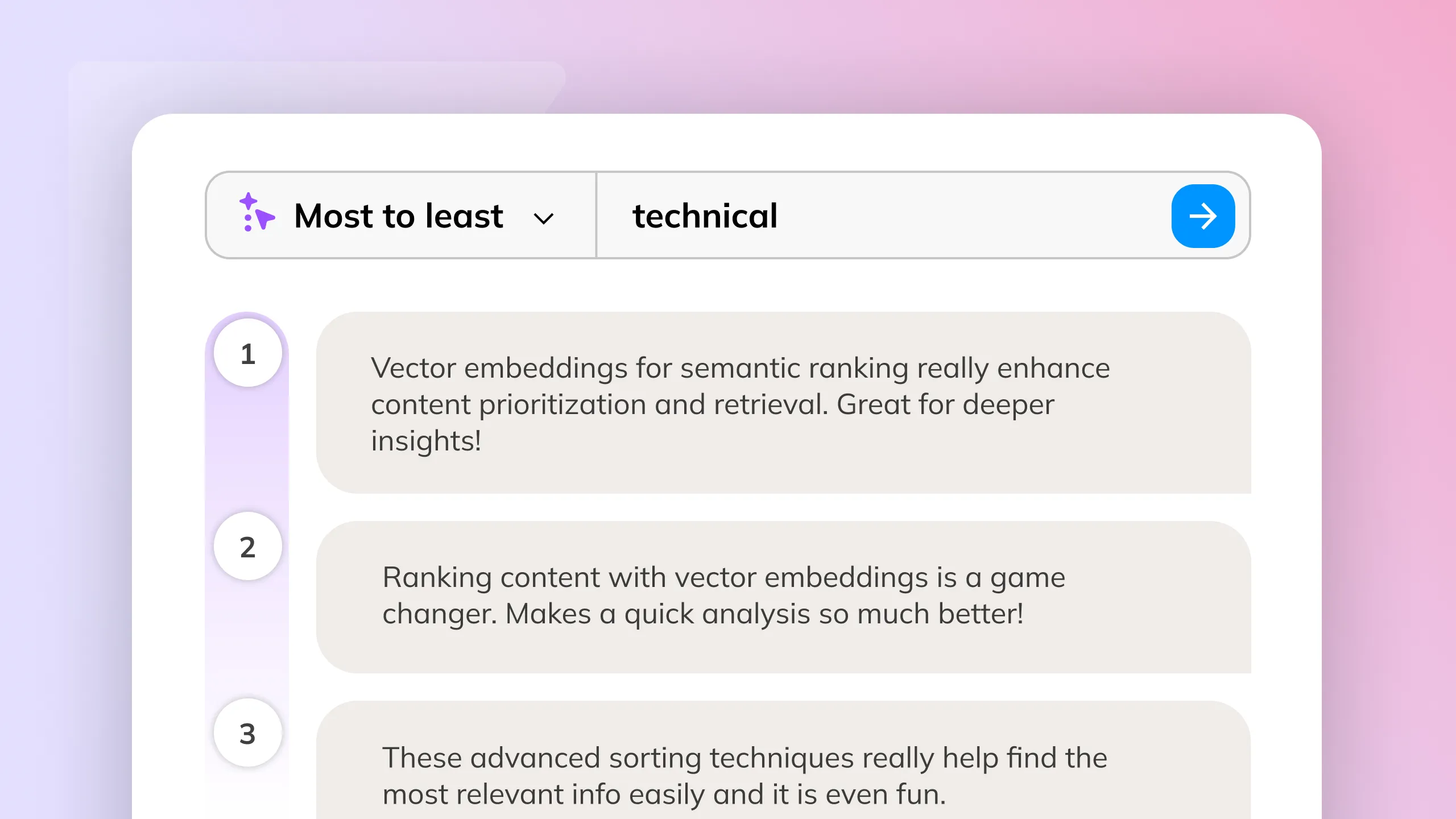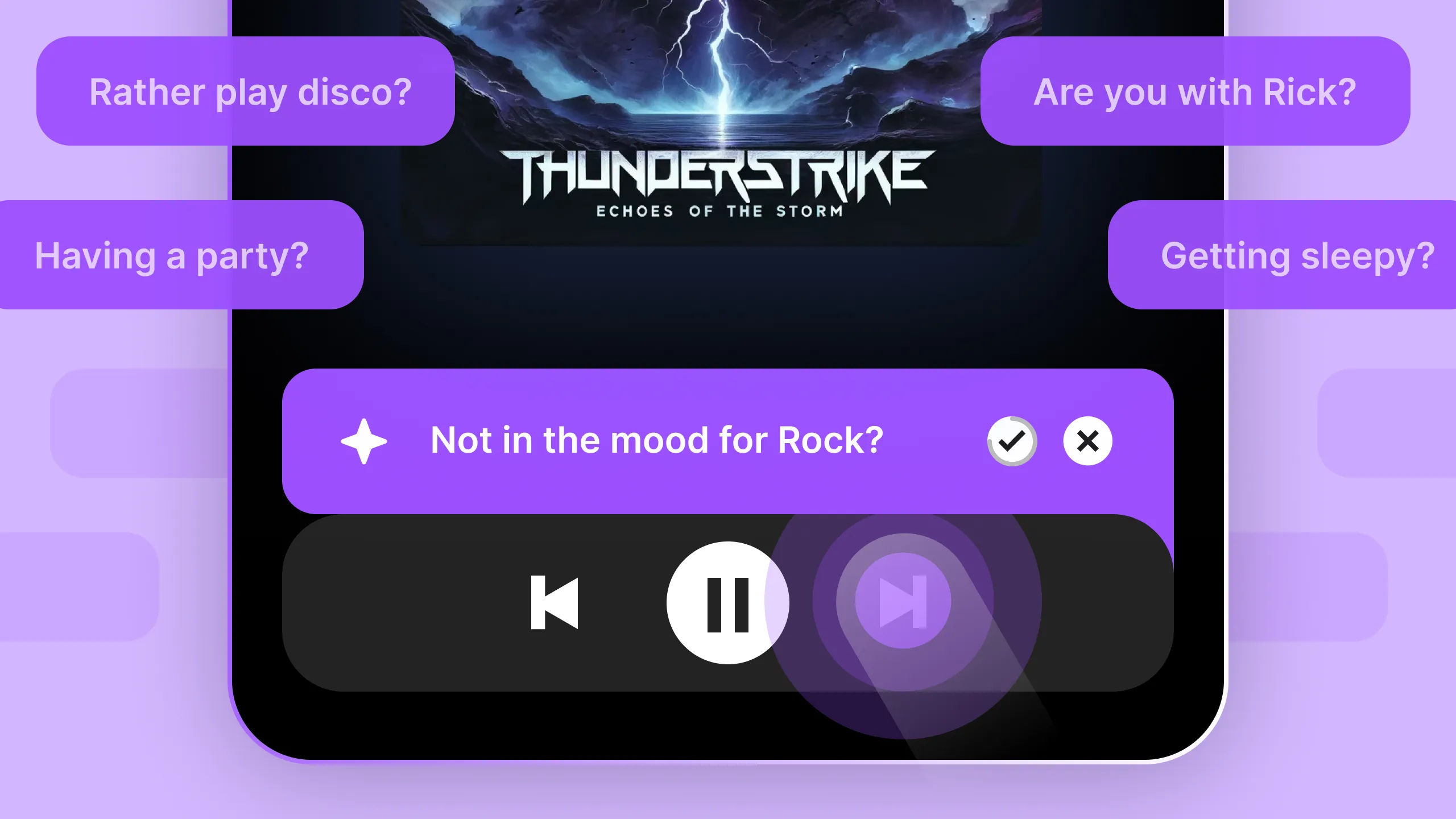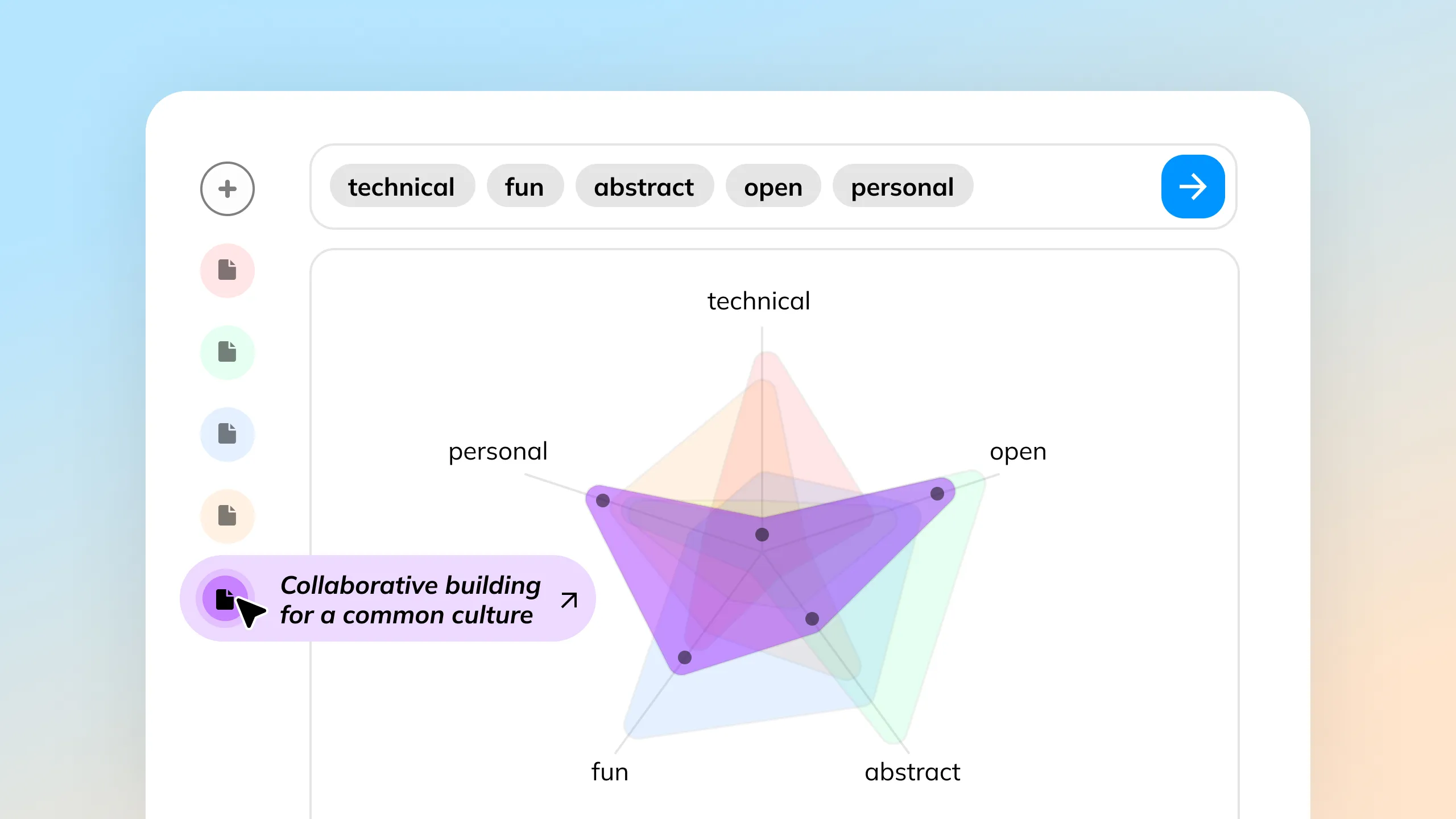Semantic ranking
Embedding models can rank content along virtually any dimension. This capability provides significant value by enabling users to explore and analyze the embeddings to create a spectrum of any features.


When searching for information, I want to rank content semantically so I can quickly access the most relevant information and make insightful comparisons.


- Enhanced Information Retrieval: By ranking content based on semantic relevance, users can quickly access the most pertinent information, fostering creative ways of searching.
- Insightful Comparisons: Displaying results along a ranked spectrum facilitates comparison of relevant attributes, providing valuable insights into the relationships and similarities between different pieces of content.
- Relevancy Thresholds: A semantic ranker can incorporate a relevancy threshold to exclude results that are highly irrelevant, ensuring higher quality and more useful outputs.

More of the Witlist

Spatial prompting integrates spatial relationships into prompts, offering a novel approach to manipulate concepts. This dynamic approach can lead to more intuitive and creative outcomes.

You should control how products and services (not) access your data through a manageable profile. This allows you to create a relevant context across many platforms while maintaining control.

A smart browser assistant that understands the context of your open tabs to offer relevant suggestions and actions, enhancing productivity through transparency and control.

Use a spatial dimension to explore and manipulate language. By pulling text around on a map, you can play with different features in a playful and meaningful way.

When an observation is added to the context from an implicit action and a prediction is made, users should be able to easily evaluate and dismiss it.

Comprehend and compare large documents by visualizing embeddings and their scores, enabling a clear and concise understanding of vast data sources in a single, intuitive visualization.